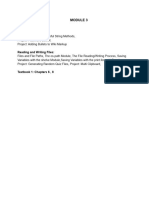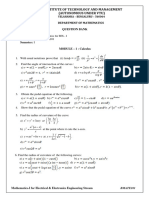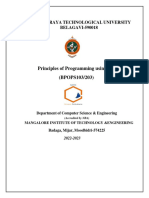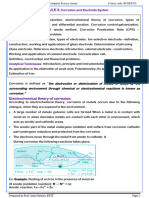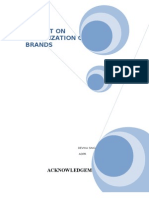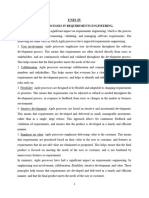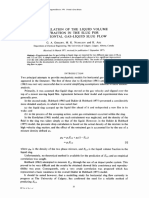National Education Society (R.
)
J N N College of Engineering, Shivamogga
(Approved by AICTE, New Delhi, Certified by UGC 2f & 12B, Accredited by NAAC –‘B’,
UG programs:CE,ME,EEE,ECE,CSE,ISE,TCE acredited by NBA:1.7.2022 to 30.6.2025,
Recognized by Govt. of Karnataka and Affiliated to VTU, Belagavi)
Department of Electronics & Communication Engineering
Course: Introduction to Python Programming Couse Code: BPLCK205B
Module 2
Question Bank
CO mapped: CO2-Identify the methods to create and manipulate lists, tuples, and dictionaries.
Q.N. Questions Marks
1. What is a list? Explain the methods that are used to insert and delete items from the list. 8
2. Explain the methods of List data type in Python for the following operations with suitable code snippets 8
for each.
(i) Adding values to a list. ii) Removing values from a list
(iii) Finding a value in a list. iv) Sorting the values in a list
3. Explain negative indexing, slicing, index(), append(), remove(), pop(), insert() and sort() with suitable 8
example.
4. Explain the following methods in lists with an examples: 8
i) len() ii)sum() iii) max() iv)min()
5. Explain different ways to delete an element from a list with suitable Python syntax and programming 6
examples.
6. What is the difference between copy.copy( ) and copy.deepcopy( ) functions applicable to a List or 6
Dictionary in Python? Give suitable examples for each.
7. Explain the use of in and not in operators in list with suitable examples. 6
8. How is the dictionary different from list? Assume a dictionary containing city and population as key and 6
value respectively. Write a program to traverse the dictionary and display most populous city.
9. How is tuple different from a list and which function is used to convert list to tuple. 5
10. Explain set() and setdefault() method in a dictionary . 6
11. Discuss the following Dictionary methods in Python with examples. 8
(i) get() (ii) items() (iii) keys() (iv) values()
12. Explain different ways to delete an element from a list with suitable Python syntax and programming 7
examples.
13. If S= ‘Hello World’ , explain and write the output of the following statements: 4
i) S[1:5] ii) S[:5] iii) S[3:-1] iv) S[:]
14. What is Dictionary in Python? How is it different from List data type? Explain how a for loop can be used 6
to traverse the keys of the Dictionary with an example.
15. Write a python program to accept n numbers and store them in a list. Then print the list without ODD 6
numbers in it.
16. For a=[‘hello’, ‘how’, [1,2,3], [[10,20,30]]] what is the output of following statement (i) print( a[ : : ] ) (ii) 6
print(a[-3][0]) (iii) print(a[2][ : -1]) (iv) print(a[0][ : : -1])
17. Write a python program to read dictionary data and delete any given key entry in the dictionary. 4
18. Using string slicing operation write python program to reverse each word in a given string (eg: input: “hello 6
how are you”, output: “olleh woh era uoy”)
19. Using string slicing operation write python program to reverse the sentence in a given string (eg: input: 6
“hello how are you”, output: “uoy era woh olleh”)
20. Write a program to create a list of number and display the count of even and odd numbers in the list. 6
21. Read a multi-digit number (as chars) from the console. Develop a program to print the frequency of each 6
digit with suitable message.
22. Write a Python program that accepts a sentence and find the number of words, digits, uppercase letters 4
and lowercase letters.
23. Develop a program to find mean, variance and standard deviation. 6
24. Write a program to take a sentence as input and display the longest word in the given sentence. 6
25. Create a function to print out a blank tic-tac-toe board. 7
























